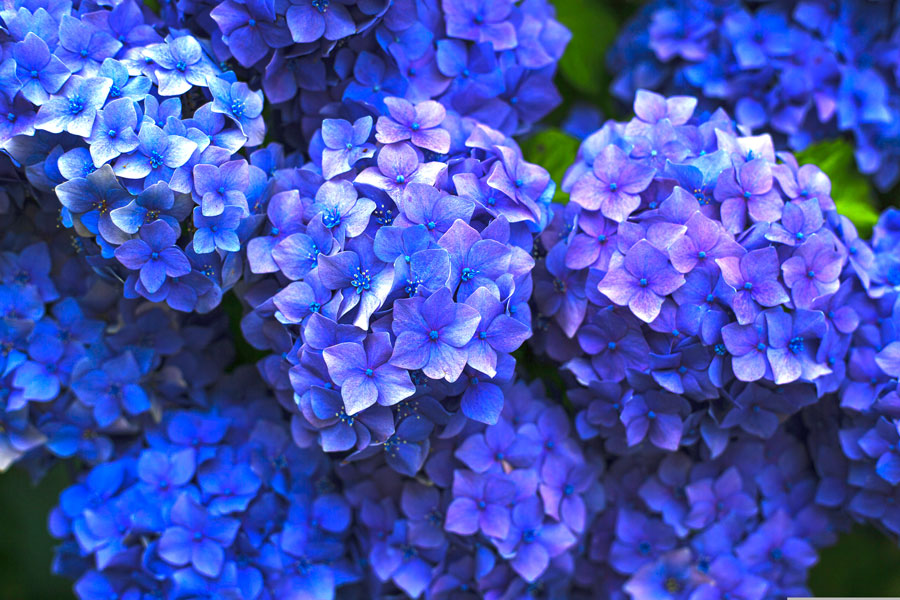Spring is an unsettled time of year as warm sunny days and mild nights can instantly change to wet, cold and freezing temperatures. Learning to read the weather is a fundamental part of learning to garden. You can so easily be caught out at this time of year as our enthusiasm, fuelled by mild spells and lengthening days triggers an urgency in our heads. As a general rule I try to plan my gardening around the weather, although there comes a point when a job just has to be done. Pruning roses for example is best completed before the end of this month, as is pruning your hydrangeas.
Most roses flower on current season’s growth and spring pruning stimulates new growth and hopefully good flowering especially for Hybrid Tea and Floribunda types. If you haven’t pruned your climbing roses then try to complete it this month. As well as encouraging better flowering, spring pruning gives the opportunity to remove all spindly and dead stems and helps keep an open goblet shape. Aim for four or five main stems and prune to a bud that faces outward so that the centre of the rose stays open reducing overcrowding and reducing disease. Feed with a general or rose specific feed sprinkled around the base of the plant and mulch with good garden compost to retain moisture.

The most popular hydrangeas we grow are called ‘mop-heads’ or ‘lace-caps’, terms which refer to the shape and style of their blooms, these require only light pruning and removing the old flower heads that were left on to protect the plant through the winter. Thin congested plants, removing about one third of old, weak or badly placed branches. The remaining branches should be pruned to the first pair of healthy buds behind the old flower head. Another group of hydrangeas are called ‘paniculate’ types with a long arching cone shaped flower head. These flower later than the ‘mop-head’ and ‘lace-cap’ types and respond well to quite hard pruning and can be cut back to a healthy pair of buds about 25cm (10 inches) from the soil level. This will encourage larger flowers on long arching stems. If they are planted to the back of the border, cut to about 60cm ( 2 ft) which will result in a taller display.

If you haven’t already trimmed your lawn then now is a good time to start. Set the mower on its highest setting to remove about 1cm (1/2 inch) of growth, cutting too hard at this time of year will shock the grass and makes it more susceptible to early disease attack and frost damage. Reduce the cutting height every two weeks until you reach the desired finish. A spring feed of granular fertiliser towards the end of the month will help maintain a healthy green lawn. Areas that have had heavy foot traffic or are a little wet should be aerated with a garden fork, pushing the tines in to half their depth and giving a little wiggle will allow air to get to the roots and help water drain away. If your lawn is a quite springy think about scarifying ( removing the build up of dead grass), on small areas this can be done with a wire rake, but if you have a larger lawn consider hiring a scarifying machine, it’s like a mower with wire tines and is very good at removing ‘thatch’ with much less effort. Any arisings can be put on the compost heap.
Sowing annual flowers and vegetable seeds can be frustrating as cold and frosty nights can damage emerging seedlings. My spring sowing calendar is spread over a few weeks so that the resulting seedlings can be transplanted into modules or pots and grown on in a cool greenhouse (maintained frost free). There is nothing more frustrating than having several pots of seedlings needing transplanting and not having the space to put them that is frost free. There is a limit to how many windowsills you will be allowed to use and the light levels at this time of year can still draw the seedlings making them weak, long and spindly. If you don’t have space or a greenhouse you might like to consider buying pre grown plants from your local nursery or online. These are usually ready to plant out and save time if you don’t need huge amounts. Although more expensive than seed and in some cases may seem more costly than buying vegetables from some of the budget supermarkets, the pleasure they give and the taste is worth the effort.
Next month, (looking after spring bulb displays, easy salad leaves, and feed your strawberries.)







